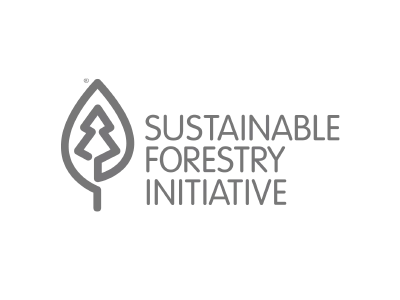Introduction: Why SB 261 matters
In today’s rapidly evolving corporate sustainability landscape, companies can no longer afford to ignore the financial risks posed by climate change. California’s SB 261, the Climate-Related Financial Risk Act, is the latest signal that regulatory bodies are taking climate accountability seriously. Signed into law in 2023, SB 261 requires companies with more than $500 million in annual revenue doing business in California to disclose their climate-related financial risks and mitigation strategies in line with the globally recognized Task Force on Climate-Related Financial Disclosures (TCFD) framework. The first reports are due by January 1, 2026, with noncompliance penalties of up to $50,000. But the real cost of inaction could be far greater.
WHEN: The first reports are due by January 1, 2026, and every two years thereafter.
WHY: To drive transparency, resilience, and accountability in an era of escalating climate impacts. And to avoid that $50,000 fine.
Why SB 261 matters beyond compliance
Long-term sustainability:
Managing climate risks strengthens resilience and reveals growth opportunities.
Investor expectations:
TCFD-aligned reporting is becoming the global norm, with regulations in the EU and U.K.
Stakeholder trust:
Transparency on climate risks enhances credibility and attracts investment.
Strategic advantage:
SB 261 prepares businesses to thrive in a low-carbon economy — not just avoid fines.

What you need to know about SB 261
The rising cost of inaction
From supply chain breakdowns to infrastructure damage, the financial consequences of extreme weather are mounting. Recent events like the 2024 Asheville floods, which submerged neighborhoods and shuttered businesses across North Carolina, underscore the growing frequency and severity of climate-related disruptions. In 2023 alone, the U.S. experienced 28 separate billion-dollar weather disasters. These physical risks — damages from storms, wildfires, and droughts — have real financial impacts, including property loss, operational downtime, and market instability.
Meanwhile, transition risks are accelerating. As governments and markets pivot toward a low-carbon economy, companies face growing regulatory, legal, and market pressures. New emissions regulations, shifting consumer preferences, and technological advances can make some business models obsolete, while creating opportunities for others.
Preparing for a new normal
SB 261 requires companies to assess and disclose both physical and transition risks, providing a clearer picture of their exposure to climate-related financial vulnerabilities. This transparency is becoming a business imperative. Investors, customers, and other stakeholders increasingly expect companies to demonstrate resilience and accountability.
Complying with SB 261 isn’t just about avoiding fines — it’s an opportunity to build long-term business resilience. Companies that proactively manage climate risks can reduce operational disruptions, protect their supply chains, and gain a competitive edge by aligning with global reporting standards.
Act now to build resilience
The message is clear: climate-related financial risks are no longer theoretical — they are material and mounting. SB 261 offers companies a framework to assess, disclose, and address these risks, turning regulatory compliance into a strategic advantage. By embracing transparency and integrating climate risk into their core business strategies, companies can safeguard their operations and strengthen their market position in an increasingly volatile world.
Social implications: Climate as a social issue
While climate change is often viewed through an environmental lens, its impacts are deeply social. The effects of a major weather event tend to be disproportionately felt by vulnerable communities who often have the least responsibility for contributing to climate change. SB 261 encourages companies to integrate social considerations into their climate disclosures. By mapping climate risks across their value chains, businesses have an opportunity to prioritize stakeholder well-being — whether by supporting suppliers in adapting to extreme weather or safeguarding employees from heat stress. Read more from our Head of Sustainability Strategy.
The 5-step roadmap for SB 261 compliance
STEP 1: Research and data collection
- Begin by gathering and analyzing data on your company’s current and potential climate-related risks and opportunities (R&Os).
- Conduct a thorough inventory across your value chain, identifying high-risk hotspots based on industry, geography, and asset vulnerability.
- Leverage internal data, external research, and existing reports to create a comprehensive risk foundation.
STEP 2: Risk and opportunity assessment
- Evaluate and categorize your identified R&Os, assigning risk levels across short-, medium-, and long-term time horizons. This includes assessing both physical risks (e.g., supply chain disruptions from extreme weather) and transition risks (e.g., policy changes or shifting market demands).
- Gain internal alignment by engaging key stakeholders across departments.
STEP 3: Climate scenario analysis
- Select relevant climate scenarios (e.g., below and above 2°C warming) to model the potential financial impacts of your R&Os.
- Assign risk levels to different time horizons and assess the likelihood and severity of climate disruptions. This analysis will help you quantify exposure to both physical and transition risks, informing your strategy and mitigation efforts.
STEP 4: Priortize stratgic actions
- Use your R&O outcomes to prioritize actions that enhance business resilience. Identify opportunities to mitigate risks (e.g., fortifying supply chains, updating facilities) and capitalize on opportunities (e.g., expanding low-carbon products).
- Align these strategies with internal processes, governance structures, and future planning.
STEP 5: Disclose with confidence
- Define your disclosure strategy and compile your SB 261-compliant report, aligning with the TCFD framework.
- Ensure your report clearly communicates your R&O assessment, scenario analysis, mitigation strategies, and governance processes. By disclosing with transparency, you’ll build stakeholder trust and position your business as a leader in climate resilience.
Understanding transition risks versus physical risks
Climate risks fall into two categories:
→ Transition risks arise from the shift to a low-carbon economy, driven by new regulations, market changes, and consumer demands. Companies that fail to adapt risk facing higher costs or losing market share.
→ Physical risks stem from climate hazards, such as extreme weather or rising sea levels, which can damage infrastructure, disrupt operations, and destabilize supply chains.
SB 261 compels businesses to assess and disclose both types of risks — helping them prepare for a rapidly changing landscape.
The bigger picture of climate resilience
SB 261 isn’t just about regulatory compliance — it’s about embedding climate resilience into your business strategy. As extreme weather events and market shifts become more frequent, companies that proactively manage climate risks will be better positioned to thrive.
California’s regulation reflects a global movement toward climate accountability. With major markets like the EU and U.K. adopting similar disclosure mandates, SB 261 signals that transparent climate risk reporting is becoming the norm. Forward-thinking companies can use this moment to strengthen stakeholder trust, enhance operational stability, and gain a competitive edge.
The real opportunity lies in turning risks into business advantages. Climate risk assessments can uncover ways to build resilience — whether by strengthening supply chains or future-proofing products. For example, if flooding threatens a key facility, diversifying production locations or upgrading infrastructure reduces exposure. Similarly, companies across all sectors can innovate to offer solutions that clients will need in a warming world. For example, an HVAC provider that focuses on electric heat pumps that provide cooling and heating could gain a market advantage.
Investing in climate resilience also drives business benefits: improving efficiency, lowering costs, and unlocking new growth opportunities. By integrating climate risk management into their core strategies, companies can safeguard their future while contributing to a more sustainable, resilient economy.
How to avoid the fine and build a more resilient business
SB 261 is more than a compliance requirement — it’s a chance to build resilience, gain competitive advantage, and lead in a rapidly evolving business landscape. By proactively assessing and disclosing your climate risks, you’ll strengthen your operations, earn stakeholder trust, and prepare for future regulations.
Don’t wait. Start by conducting a thorough risk assessment, aligning with TCFD, and embedding climate resilience into your strategy. For expert support on SB 261 compliance and climate risk management, contact thinkPARALLAX. Our team helps the most influential companies on the planet navigate sustainability regulations and turn risks into opportunities. Let’s build a future where your business — and the world — thrives.
For the latest updates on California climate legislation, sign up for our newsletter.
Who we are
thinkPARALLAX is a full-service strategy and communications agency on a mission to help companies get started and accelerate their sustainability journey.
We’re a team of sustainability experts, communication strategists, and brand-savvy designers dedicated to making sustainability business as usual. We partner with influential companies across industries to build customized sustainability strategies, roadmaps, programs, reports, engagement, and communications, aligned to a company’s unique ambitions, brand, and business.
Our Clients































